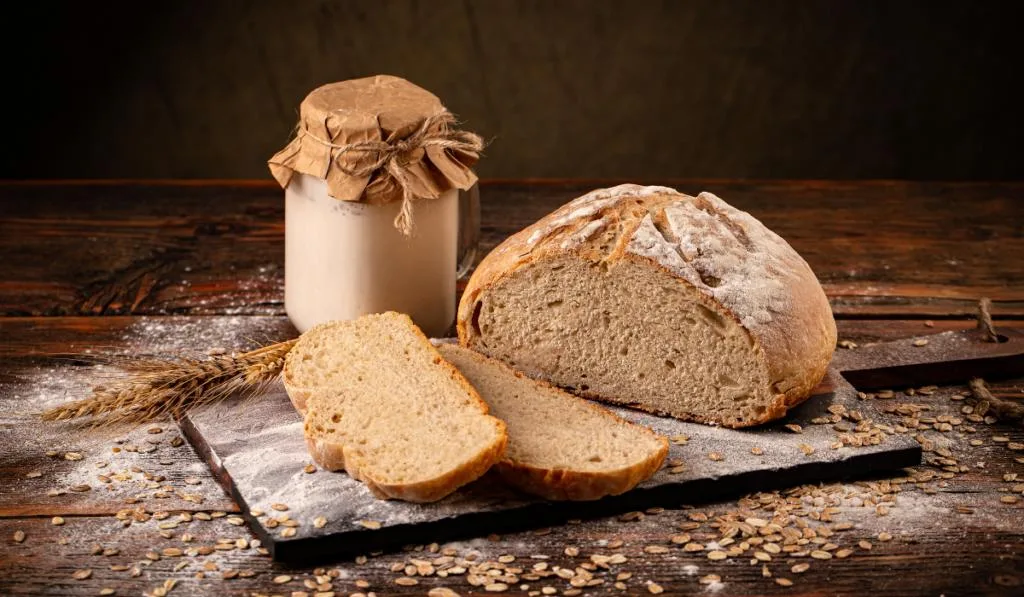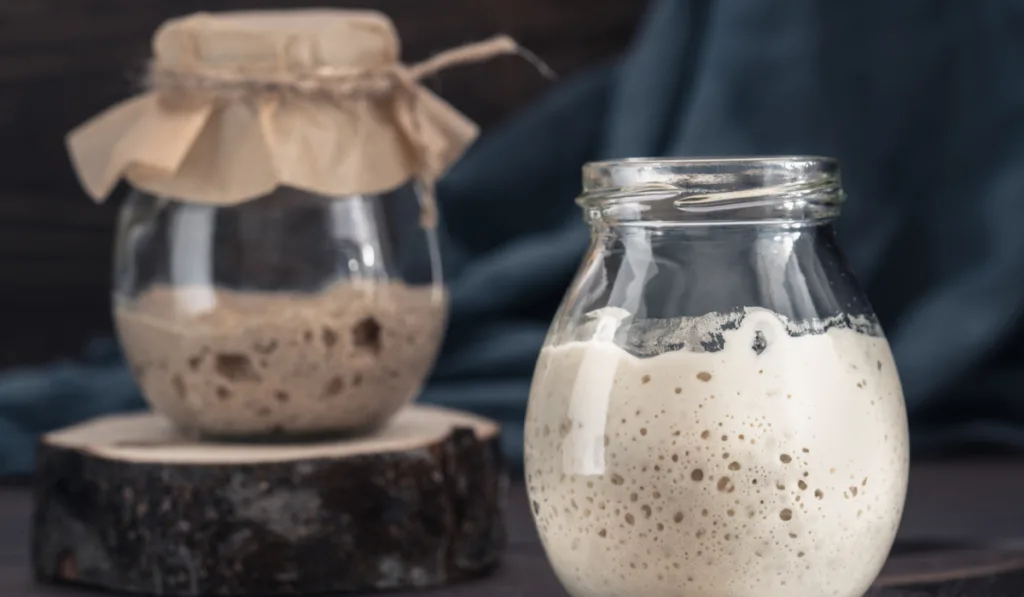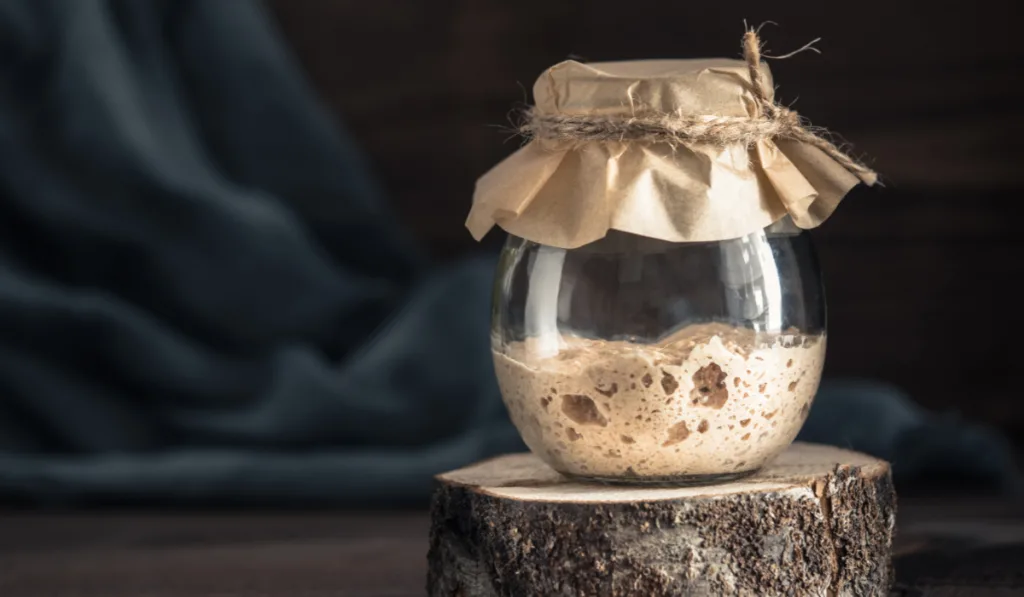Making a sourdough starter can take anywhere between a week and 10 days to prepare. However, once the starter is completed and properly maintained, it can last for several years. Sourdough starters require you to give your undivided attention to the ingredients in order to ensure yeast grows in your starter, but not bacteria.
It is possible for your sourdough starter to go bad. Sourdough starters spoil when the mixture is contaminated by bacteria. It is not advisable to eat a sourdough starter that you suspect may have gone bad as you could end up getting sick if you eat a spoiled sourdough starter.

It is important to know the signs of a bad sourdough starter before preparing your sourdough starter. This will save you time and energy, preventing you from only realizing something is wrong when you bake the bread, while also helping you avoid falling ill from eating bad sourdough.
Table of Contents
How to know if your sourdough starter has gone bad
Here are some pointers to look out for to determine if your sourdough starter has gone bad.
Color of the sourdough starter
After preparing your sourdough starter using either dried yeast or wild yeast, examine the color of your sourdough starter. If you notice your sourdough starter is pink, orange, or dark brown, this is an indication that the starter is contaminated and that you should toss out the batch.
Mold on the sourdough starter
While there is some lee-way for tending to your starter, neglecting your starter will cause mold to develop or result in the bad bacteria taking over the batch. Mold can manifest in various colors and is generally fuzzy in appearance.
Any orange or pink shades or streaks are an indication that bad bacteria has taken over your batch. If you find any mold in your batch or suspect that bad bacteria has taken over your batch, then it’s time to throw that batch away and start again.

Liquid on top of the sourdough starter
As your sourdough starter is developing, you may notice a liquid forming on top of the starter. This liquid is referred to as “hooch”. Hooch is the alcohol given off as the wild yeast begins to ferment.
It is important to ensure your starter has been fed regularly because failure to do so causes hooch to arise on top of your starter. The presence of hooch indicates that your starter is hungry and needs to be maintained. Hooch can change colors and still be edible.
If your starter is neglected for an extensive time period, you may see the turn from a clear color to a dark color. While gray, black, or brown hooch does not indicate your starter has spoiled, a streak of pink or orange in your hooch is a cause for concern.
If your hooch displays a pink or orange tint or streak, this is a sign that your starter has gone bad. You will need to discard the starter and begin again.
However, if your starter has not spoiled, you can simply pour off the hooch if you think it is too much, or stir the hooch and feed it into your mixture.
Smell of the sourdough starter
Your sourdough starter should have a yeast-like odor, smelling like unbaked bread dough. You should smell your sourdough starter before each use to check that it has not gone bad.
If your starter has any foul, decaying, or moldy odors, then this is an indication that your starter has gone bad and you should throw out the entire batch.
How to prevent your sourdough starter from spoiling
Here are some tips to prevent your sourdough starter from spoiling.
Avoid using aluminum or copper
It is perfectly fine to use a metal spoon when stirring your sourdough starter or placing your starter in a metal bowl. Additionally, anything made out of stainless steel is harmless and can be used. Avoid using anything that is made of reactive metals like copper or aluminum as these could kill your starter.
Tend to your sourdough starter regularly
It is important that you tend to your starter regularly to ensure bacteria or mold does not develop in it. If you see any signs of pink, brown, or orange mold, you’ll need to throw out the batch and start over.
Tend to your sourdough starter at the same time every day
Try to be consistent in feeding your starter at the same time every day. However, not timing your feedings to be at the exact same time won’t be detrimental to your starter, provided you do it within a reasonable time since the previous feeding.
Overfeeding your sourdough starter
While it is important to feed your sourdough starter regularly, it is possible to overfeed your starter. When you are feeding your starter, by adding water and flour to the starter, you are thinning out the population of microorganisms in the starter.
The existing bacteria and yeasts eat the new flour and multiple, therefore rebuilding the population of microorganisms. This manifests as your starter bubbling and rising.
If you feed your starter too often, you will be decimating the population of microorganisms until it no longer exists, leaving you with only a mixture of water and flour.
Unless you are trying to revive a dormant sourdough starter, you should only feed your starter when it at its maximum height and full of bubbles.

Storing your sourdough starter
A glass jar with a wide mouth is the ideal storage container for your sourdough starter. By using a wide-mouthed glass jar, you are able to easily see what’s going on inside your starter, and can easily stir your starter.
You should avoid using an airtight container at all costs. Airtight containers are not suitable because of the fact that your water and flour mixture will start to ferment, causing it to increase in size and give off some gases which cannot escape in an airtight container.
This is risky because it means that due to there being no way for the gas to escape, pressure could build-up to the point that your container cracks or even breaks.
Additionally, airtight containers are not suitable because the starter needs space to expand in size while inside the container and the gas will take up space inside the container.
Avoid exposing your sourdough starter to excessive heat
If your sourdough starter gets too hot, the yeast will die because yeast dies at 140 degrees. Additionally, high temperatures can cause the “bad bacteria” to grow, which can overpower the “good bacteria” which will ruin the mixture.
Your starter should be kept at a temperature of approximately 70-75 degrees.
If you decide to keep your starter in the oven to store it in a warm atmosphere, it is important that you don’t forget it in the oven else the oven’s excessive heat will cause the yeast to die, causing the starter to spoil.
Once your sourdough starter has matured, you can store it in the fridge with a loose cover. Doing this will allow the cold temperature of the fridge to slow the fermentation of the starter which will help spread out the feedings.
It’s important to note that you should not use the starter immediately after taking it out of the fridge. You will need to reactivate the starter by feeding it as you normally would, and then leaving it to settle at room temperature for at least 12 hours. It may take a few feedings to reactivate the starter.
Conclusion
The clear signs that your starter has gone bad are the presence of mold, bad odor, and pink or orange tints/streaks. While you might feel a bit disappointed to have to throw your sourdough starter away, it’s important that you put your health first.
Resources
- https://www.bakingkneads.com/how-to-tell-if-sourdough-starter-is-bad/
- https://www.leaf.tv/articles/how-to-know-if-a-sourdough-starter-is-bad/
- https://www.kingarthurbaking.com/blog/2018/03/09/sourdough-starter-troubleshooting-2
- https://www.thekitchn.com/debunking-the-10-myths-of-sourdough-bread-250222
- https://www.mashed.com/201929/mistakes-everyone-makes-with-sourdough/
